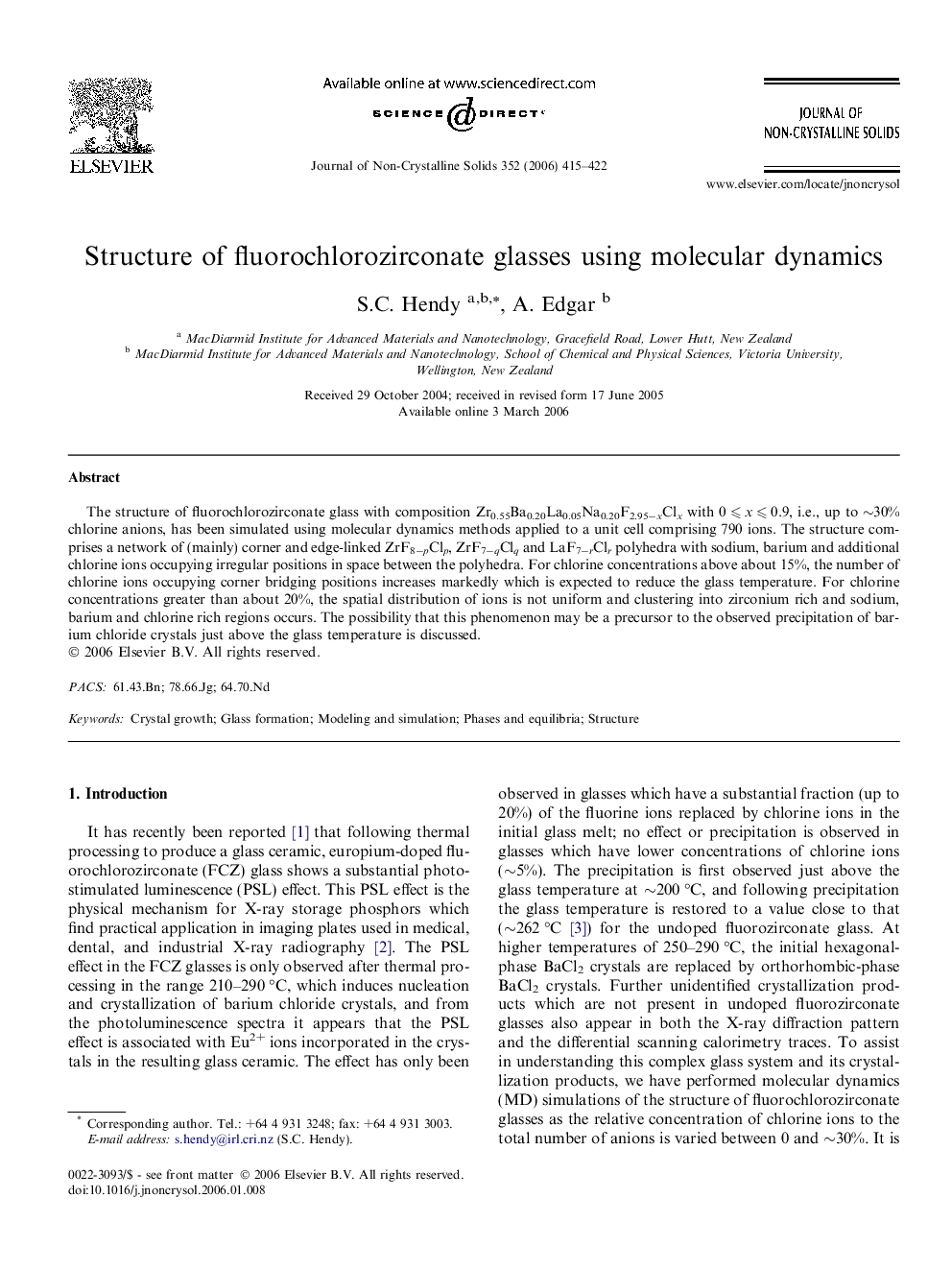| Article ID | Journal | Published Year | Pages | File Type |
|---|---|---|---|---|
| 1486586 | Journal of Non-Crystalline Solids | 2006 | 8 Pages |
The structure of fluorochlorozirconate glass with composition Zr0.55Ba0.20La0.05Na0.20F2.95−xClx with 0 ⩽ x ⩽ 0.9, i.e., up to ∼30% chlorine anions, has been simulated using molecular dynamics methods applied to a unit cell comprising 790 ions. The structure comprises a network of (mainly) corner and edge-linked ZrF8−pClp, ZrF7−qClq and LaF7−rClr polyhedra with sodium, barium and additional chlorine ions occupying irregular positions in space between the polyhedra. For chlorine concentrations above about 15%, the number of chlorine ions occupying corner bridging positions increases markedly which is expected to reduce the glass temperature. For chlorine concentrations greater than about 20%, the spatial distribution of ions is not uniform and clustering into zirconium rich and sodium, barium and chlorine rich regions occurs. The possibility that this phenomenon may be a precursor to the observed precipitation of barium chloride crystals just above the glass temperature is discussed.
